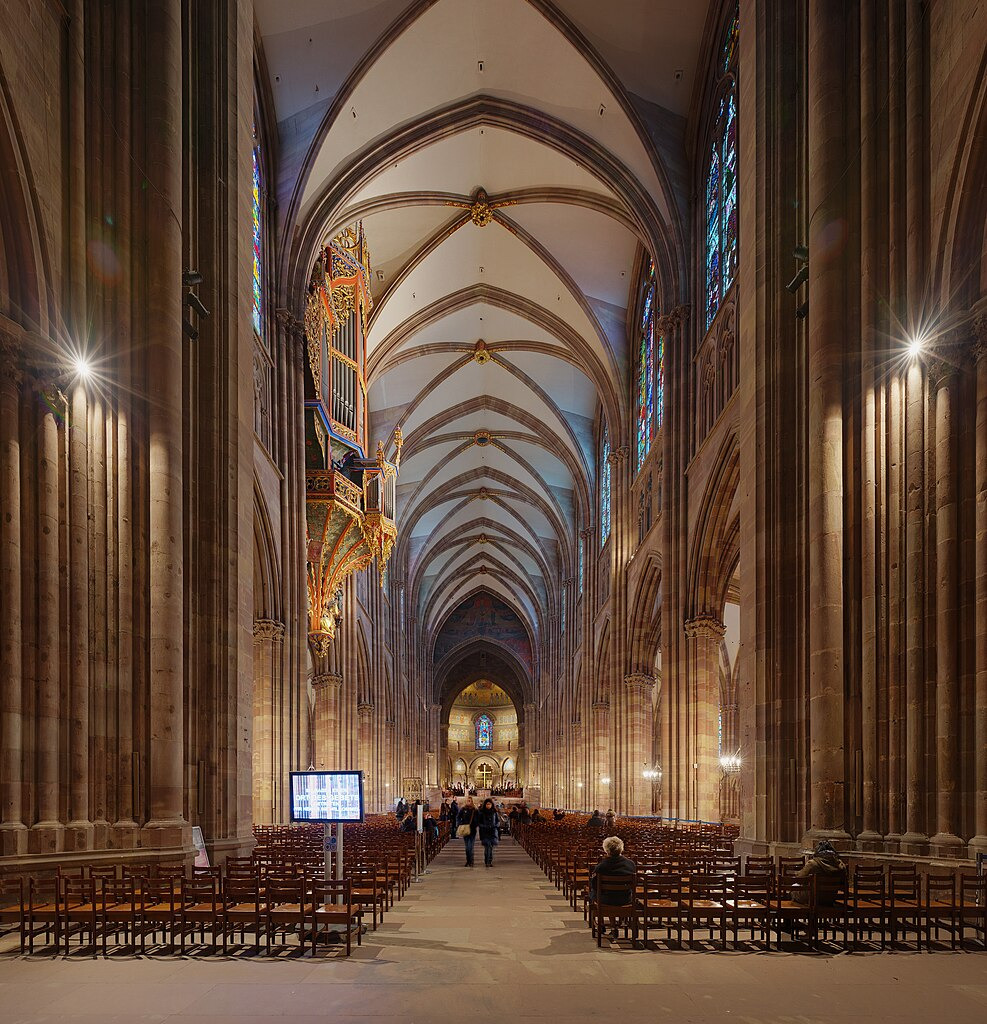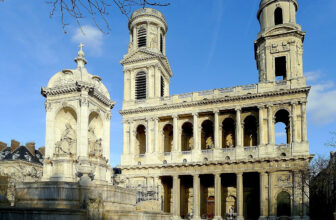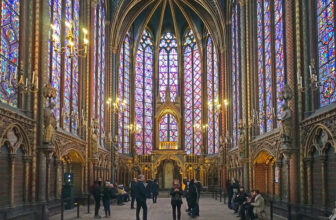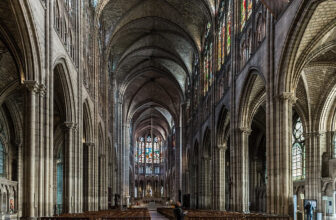
Why is Strasbourg Cathedral So Famous?
Nestled in the heart of Strasbourg, France, the Strasbourg Cathedral (officially the Cathédrale Notre-Dame de Strasbourg) stands as an awe-inspiring masterpiece of Gothic architecture. Its fame spans centuries, drawing millions of visitors from around the world annually. But what exactly makes this cathedral so famous? To answer this question, we must explore its historical significance, architectural brilliance, cultural impact, and the many stories embedded in its stones.
A Brief History
The story of Strasbourg Cathedral begins in the Roman era. The site was originally home to a Roman temple, later replaced by a series of Christian churches. Construction of the current cathedral began in 1015 under Bishop Werner von Habsburg. It was built on the foundation of earlier structures, including a Romanesque church that suffered significant damage from fire.
By the 13th century, the architectural style transitioned to Gothic, reflecting the cultural and artistic evolution of the period. Master builders, artisans, and sculptors worked tirelessly for centuries to create what many consider a marvel of medieval engineering. The cathedral was completed in 1439 with the addition of its iconic spire, which, at 142 meters (466 feet), made it the tallest building in the world at the time—a title it held for over two centuries.
Architectural Brilliance
One of the most captivating aspects of Strasbourg Cathedral is its intricate Gothic design. From its elaborate façade to its soaring spire, every element showcases extraordinary craftsmanship. Let’s delve into the architectural details that make this cathedral so remarkable:
1. The Façade
The western façade of Strasbourg Cathedral is a visual symphony of statues, carvings, and biblical scenes. Over 1,000 sculptures adorn its exterior, depicting everything from saints and angels to allegorical figures representing virtues and vices. The meticulous detailing is not only a testament to medieval artistry but also serves as a “Bible in stone,” educating the largely illiterate population of the Middle Ages.
2. The Rose Window
The cathedral’s rose window is one of the largest and most stunning in Europe, with a diameter of 14 meters (46 feet). Its kaleidoscope of colors and intricate design draw the eye upward, inspiring awe and contemplation. The stained glass depicts biblical stories, saints, and scenes of divine glory, offering a visual feast for worshippers and visitors alike.
3. The Spire
The single spire of Strasbourg Cathedral is an engineering marvel. Constructed of sandstone, it rises to a height of 142 meters, making it visible for miles around. The spire’s intricate openwork design reduces its weight while maintaining structural integrity, showcasing the ingenuity of medieval engineers.
4. The Astronomical Clock
Inside the cathedral lies another treasure: the astronomical clock. First installed in the 16th century and later reconstructed in 1843, this clock is a mechanical wonder. It not only tells the time but also tracks celestial movements, including the phases of the moon and the position of the planets. Each day at 12:30 PM, the clock’s automata spring to life, with a parade of apostles and a crowing rooster delighting onlookers.
5. The Organ
Strasbourg Cathedral is home to a magnificent pipe organ, which has been restored and enhanced over the centuries. The organ’s intricate case, adorned with gilded angels and intricate carvings, complements the cathedral’s grandeur. The instrument’s powerful sound adds an auditory dimension to the spiritual experience.
Historical Significance
Strasbourg Cathedral’s historical importance extends beyond its architecture. It has been a witness to pivotal events in European history, reflecting the complex cultural and political shifts of the region.
1. A Symbol of Franco-German Heritage
Strasbourg’s location on the border between France and Germany has made it a cultural crossroads. Over the centuries, the city changed hands multiple times, and the cathedral became a symbol of the region’s dual heritage. Its architecture and art blend French and Germanic influences, embodying the shared history of the two nations.
2. The Reformation
During the Protestant Reformation in the 16th century, Strasbourg played a key role as a center of religious and intellectual activity. While the cathedral remained Catholic, the city’s Protestant population left its mark on the region’s cultural landscape. This duality is still evident today in Strasbourg’s rich religious traditions.
3. World War II
Strasbourg Cathedral survived the turmoil of World War II, though it was not untouched. The Nazis, recognizing its cultural and symbolic value, took measures to protect it from Allied bombings. After the war, the cathedral emerged as a powerful symbol of peace and reconciliation.
Cultural Impact
Strasbourg Cathedral is not just a religious site; it is a cultural icon that has inspired artists, writers, and thinkers for centuries.
1. A Literary Muse
The cathedral has appeared in the works of many renowned authors, including Johann Wolfgang von Goethe, who admired its grandeur and wrote about it extensively. Victor Hugo also praised the cathedral, calling it a “giant marvel” and emphasizing its role as a symbol of human creativity and devotion.
2. Artistic Inspiration
Painters, sculptors, and photographers have long been captivated by the cathedral’s beauty. Its dramatic façade, illuminated by the changing light of day, offers endless opportunities for artistic expression. The interplay of shadow and light on its intricate carvings adds depth and dimension to its visual impact.
3. A Center for Music
The cathedral’s organ concerts and choral performances attract music lovers from around the globe. The combination of its acoustics and architectural splendor creates an unparalleled setting for musical expression, enhancing the cultural life of Strasbourg.
The Spiritual Experience
For many visitors, Strasbourg Cathedral is a historical monument; it is a place of profound spiritual significance. Its towering spire, which seems to reach for the heavens, inspires a sense of awe and reverence. The play of light through its stained glass windows creates an atmosphere of divine beauty, inviting contemplation and prayer.
The cathedral also hosts regular religious services, providing a space for worship and community gathering. Pilgrims and tourists alike are drawn to its sacred ambiance, finding solace and inspiration within its walls.
Recognition as a UNESCO World Heritage Site
In 1988, Strasbourg Cathedral was designated a UNESCO World Heritage Site as part of the historic center of Strasbourg. This recognition underscores its global significance as a cultural and architectural treasure. UNESCO highlighted the cathedral’s role in shaping European history and its exceptional contribution to Gothic art.
Modern-Day Significance
Today, Strasbourg Cathedral continues to captivate visitors with its timeless beauty and enduring legacy. It is a focal point of the city’s identity, hosting cultural events, religious ceremonies, and public gatherings. The annual Christmas market held in its shadow is one of the oldest and most famous in Europe, adding to its appeal as a tourist destination.
Efforts to preserve and restore the cathedral ensure that future generations can continue to marvel at its splendor. Modern technology, such as 3D scanning and digital modeling, aids in maintaining its structural integrity and historical accuracy.
Strasbourg Cathedral’s fame is well-deserved, rooted in its unparalleled architectural brilliance, rich history, and cultural significance. As a symbol of human creativity, resilience, and spirituality, it transcends time, connecting past and present in a harmonious blend of art and faith. Whether you’re an art enthusiast, a history buff, or a spiritual seeker, a visit to Strasbourg Cathedral is an unforgettable experience that leaves a lasting impression. Its soaring spire and intricate façade remind us of the boundless potential of human ingenuity and the enduring power of beauty to inspire awe and wonder.





